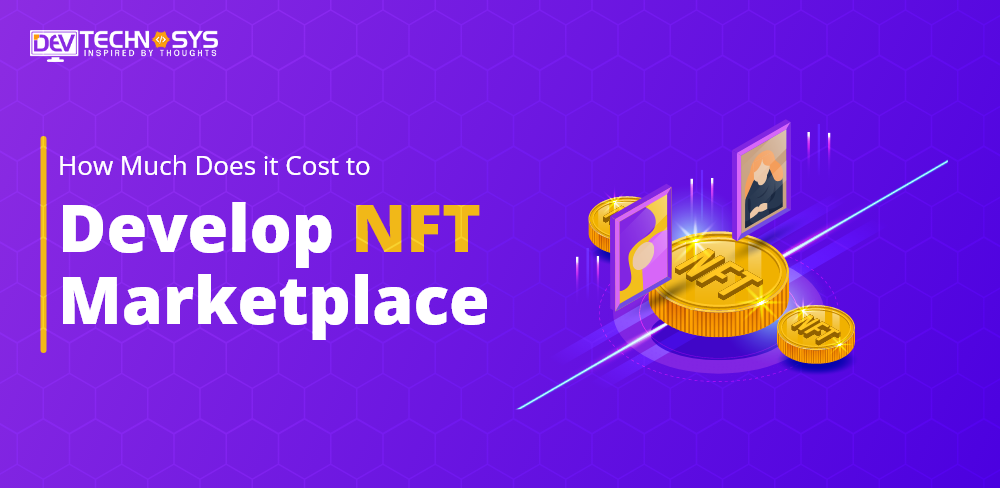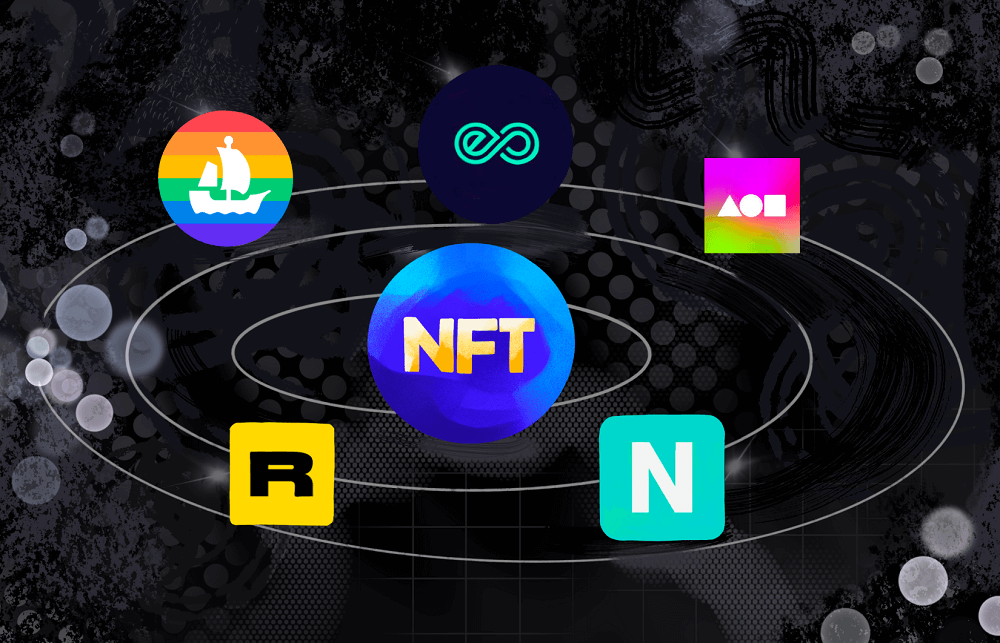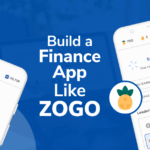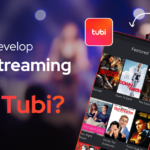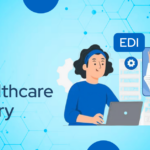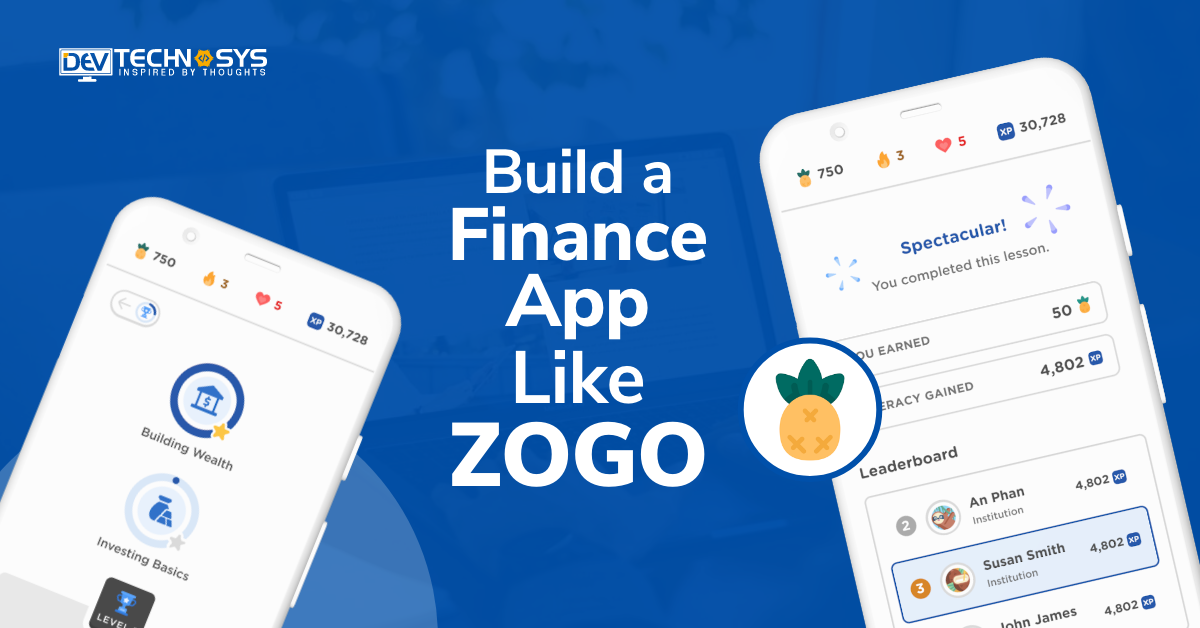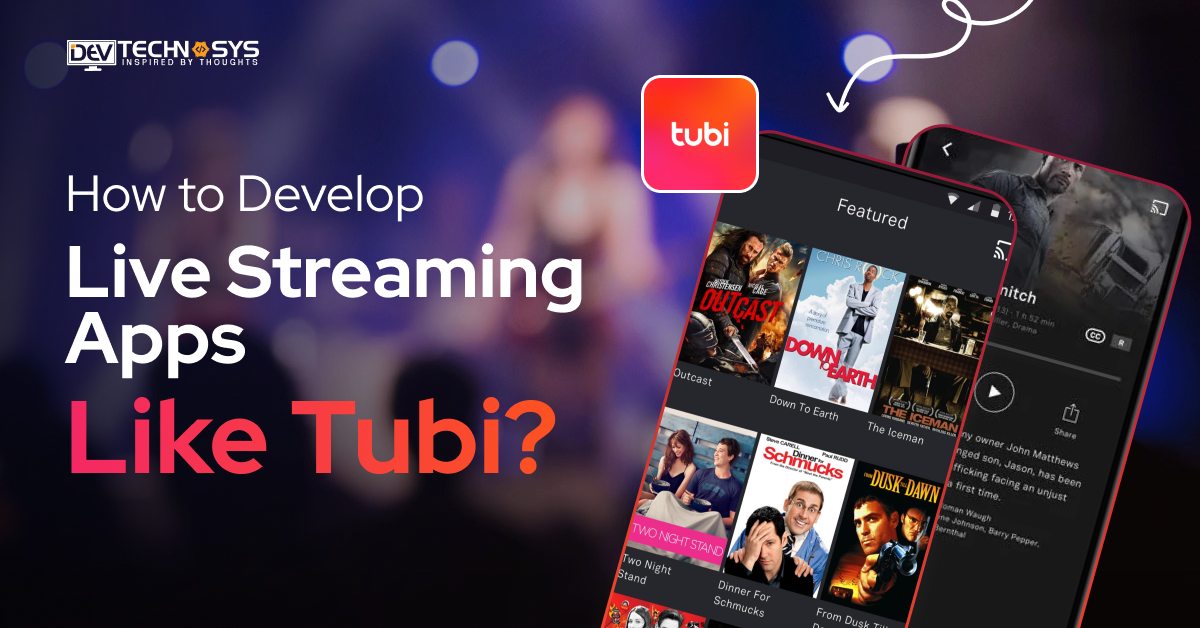The digital economy is the reality of today’s time and future. NFTs, or Non-fungible Tokens, have become the talk of the town for quite some time now. As a result, NFT marketplaces like OpenSea and Superfarm are the epicenter of funding and high revenue. Within the third quarter, i.e., Feb 2021, the NFT marketplace development has seen a massive increase of about 400%. Also, most of the NFTs were sold out instantly for around $70 million.
This ever-rising hype for NFT marketplaces has urged millions of businesses worldwide to develop NFT marketplace, and hence they started searching for the cost to develop NFT marketplace. So, if you are also sailing the same boat, you’ve reached the right place. This blog will guide you to everything about NFT marketplace development, its cost, and more. So, let’s get started.
Table of Contents
What Is An NFT Marketplace?
NFT, or Non-fungible tokens is a blockchain-based digital token and serves as a unique certificate. It establishes ownership of tangible or intangible assets like images, films, and audio files. Web3 applications called non-fungible token marketplaces let users buy and sell different kinds of NFTs. In addition, several other marketplaces are accessible to the general public, including those that let users of crypto wallets buy and trade their own NFTs.

There are, however, additional markets where only specific businesses and brands are permitted to sell their NFTs. People can easily set up accounts on an NFT marketplace and sell their digital art pieces.
Top 5 NFT Marketplaces of 2024
- Opensea
- Rariable
- Superfarm
- Ethernity
- Hoard Exchange
Different Types of NFT Marketplace Platforms
NFT marketplace development platforms are basically of two types.
1. Universal Non-fungible Tokens
With universal non-fungible marketplace development platforms, every type of cryptocurrency asset can be traded, from digital art to a domain name.
2. Niche Peer-to-Peer Marketplaces
A peer-to-peer NFT marketplace is designed to provide certain digital assets belonging to a specific niche. For example, it is an exchange platform to buy and sell tweets or digital holograms.
These are the two different types of NFT marketplaces that businesses go for while planning to develop an NFT marketplace. However, irrespective of the type of NFT marketplace, the working process will be the same for all.
NFT Marketplace Development: How It Works?
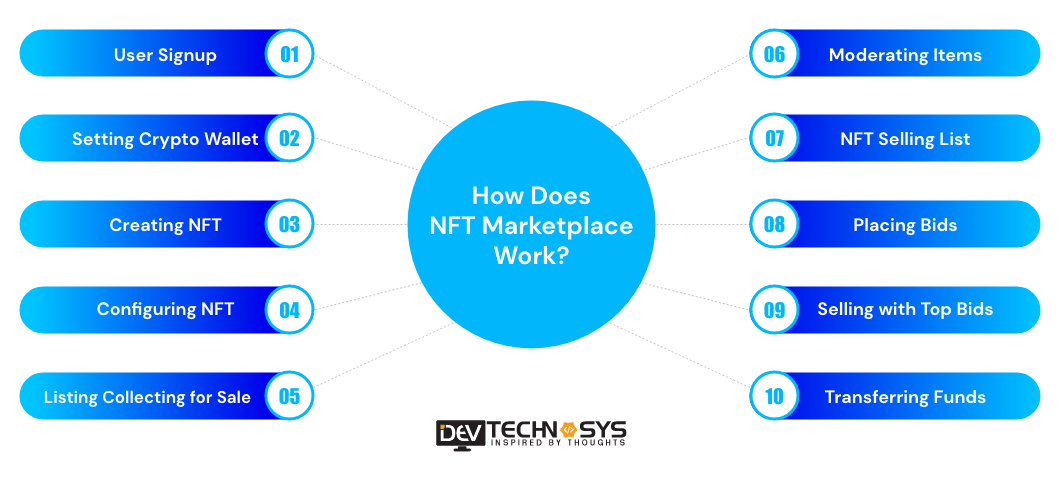
The working process of Solana NFT marketplace, Cardano NFT marketplace, and other types of NFT marketplaces will be the same as mentioned below.
1. User Sign-up –A user sign-up for an NFT platform
2. Setting Crypto Wallet –A crypto wallet is set up on the platform to store the non-fungible tokens and cryptocurrency
3. Creating NFT – Users create an NFT
4. Configuring NFT –The created NFT is further configured for the auction parameters
5. Listing Collecting for Sale –The NFT collection is displayed for sale
6. Moderating Items –The chosen NFT platform moderates the item
7. NFT Selling List –NFT tokens appear on the selling list in the auction
8. Placing Bids –Buyers placed the bid as per their preference
9. Selling with Top Bids –Sellers receive the notification regarding the top bid from the buyer
10. Transferring Funds –NFT marketplace platform handles the items transfer, provides the fund, and closes the deal.
This is how the NFT marketplace development platform works and makes it easier for both buyers and sellers to place bids. But, not every NFT marketplace platform is successful as some major factors should be considered before development.
Major Things to Consider Before Developing NFT Marketplace
With the ever-rising demand and hype for NFT marketplace development, more blockchain development firms are planning to create an NFT marketplace. But, only a few of them are well-versed with the essential factors to consider. So, here we have discussed some of the factors to keep in mind while working on NFT marketplace development.
1. NFT Standards
The driving factor behind NFTs is standards, which ensure that the asset will respond in a specified way and show how to interact with an asset’s fundamental features. There are now two accepted standards for the production of non-fungible tokens, i.e. –
A) ERC1155 – This NFT standard utilize ID that represents the entire class of assets. As a result, the c standard is much more efficient than the ERC721 standard.
B) ERC721 – In this NFT standard, unique identifiers are mapped to addresses that indicate the identifier owner. By using the “TransferFrom” method, ERC721 provides a permission-based means of transferring the assets.
2. NFT Metadata
NFT marketplace has a major concept known as ‘owner Of,’ which offers a unique way to search for the NFT owner. For instance, if a user wants to search for the owner of 212022 in an NFT smart contract, they can refer to token 212022’s owner as ‘ABC.’
The data is further verified on the NFT marketplace platforms developed by the NFT marketplace development services experts. There, metadata offers descriptive information for a specific token number, including descriptions, pictures, and other additional features.
3. Legal Documentation
Besides knowing the procedure and factors, knowing the legal documentation also holds immense importance in creating a successful NFT marketplace. So, the documents that you will require during the NFT marketplace development process will be –
- Formation of company
- Terms of service
- Community standards
- Privacy policy
- Details of IP consideration
These are the three major factors that businesses should consider while planning for NFT marketplace development. While considering these factors, businesses can ensure the application’s success in the coming time. Besides this, knowing the entire procedure of Cardano NFT marketplace development and others would greatly help.
How to Develop NFT Marketplace?
The process of NFT marketplace development becomes a little easier when you divide the entire project and develop it into small chunks. But, here’s the catch. Many business owners aren’t even aware of the NFT marketplace app development process and hence find difficulty during development. Also, they fail to know the estimated cost to develop the NFT marketplace.
So, to help such business owners, here we have highlighted the step-by-step process of marketplace app development.
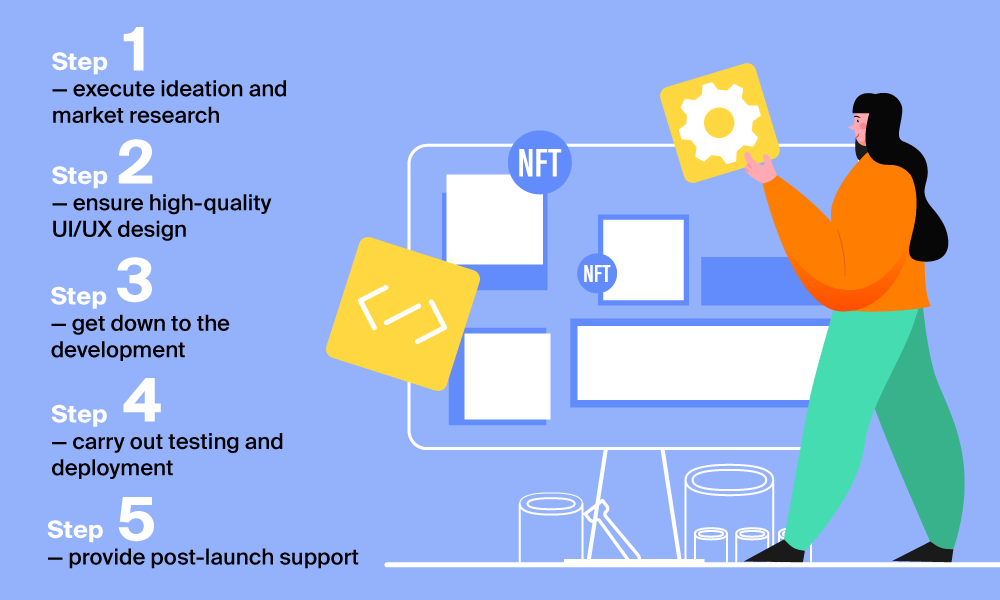
Step 1 – Discovery Phase
It is the foremost and a very crucial step of NFT marketplace development. The process involves gathering essential information about the NFT project and knowing the competitors. Before beginning the development process, businesses are advised to gather information about the platform structure and front-end & back-end operations.
Step 2 – Designing Phase
Next comes an interesting phase, i.e., designing the NFT marketplace. Unlike technicalities, an application’s design holds immense importance in grabbing the users’ attention at first glance. Therefore, whether it is about Crypto wallet app development or any other development, the design must be top-notch.
Step 3 – Development Phase
Once you gather all the important data about the site’s features and user flows, begin working on the app wireframe and layouts. Remember, your goal should be to develop a well-designed NFT marketplace with an accurate user interface. If it is not your cup of tea, hire the top blockchain app development company, professionals.
Step 4 – Testing Phase
Finally, when you complete the app development process, test it properly to eliminate all the errors and bugs before the final launch. None of the users will prefer to access an application with multiple errors or slow performance. Right? That’s why in-depth application testing is crucial. It is advisable to hire dedicated blockchain developers and testers to ensure app success.
Step 5 – Deployment & Support
Finally, when all the steps mentioned above are performed successfully, it is time to deploy the NFT marketplace on the production server. This step also includes extensive planning for further development of the marketplace platform to meet the users’ needs and demands.
These are the five simple NFT marketplace app development phases that every business owner must know to create a perfect marketplace. Along with considering the development process, businesses should also know the essential features of a successful NFT platform.
Essential Features of A Successful NFT Marketplace
While planning for non-fungible tokens, businesses should realize that there are both front-end and back-end challenges. For example, a user-friendly front-end should work seamlessly for both the artists and buyers while making their search simple.
On the other hand, back-end resources must have a secure and effective operation with blockchain and NFTs. So, to ensure smooth development, our blockchain software development company professionals have thrown light on the essential features of a perfect NFT marketplace.
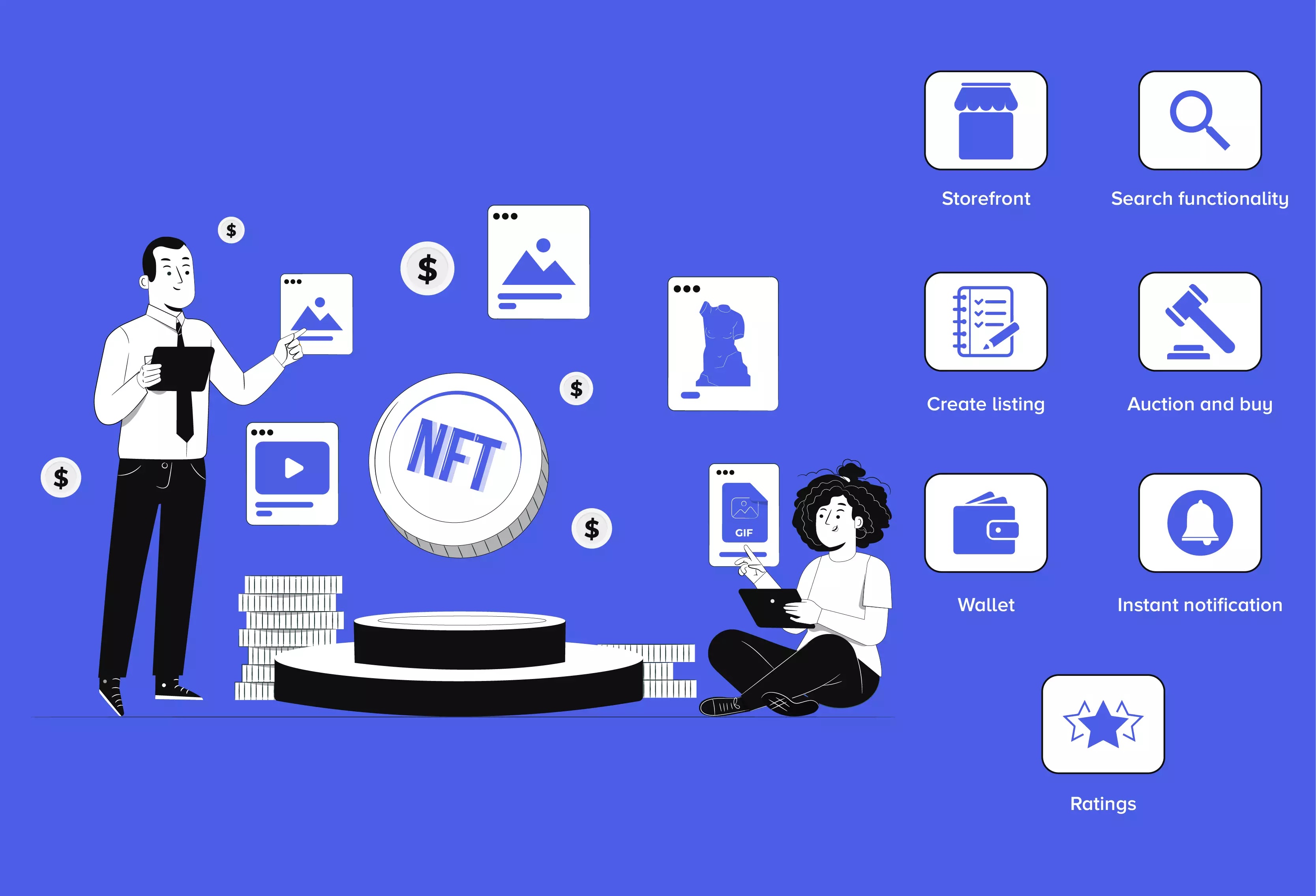
1. Storefront
NFT marketplace websites are somewhat similar to e-commerce websites, so they will also require the storefront to store the essential information. Here, the website admin will decide the details displayed for each file, including owner, details, price history, bids, and more.
2. Search Functionality
Your NFT marketplace must possess tagging and management functionality, making it easier for users to look for items to buy on the NFT platform. This feature of the NFT marketplace should generally include – Price history, asset owner, price history, previous bids, and more.
3. Generate Listing
This amazing NFT marketplace feature is centered on the sellers. The platform offers users the feasibility of creating listings where they can enter their crucial NFT details. Such features are specifically designed for sellers.
4. Auction & Buy
Every NFT marketplace platform must have an efficient NFT buying system, which is a crucial part of NFT marketplace development services. Here, you can allow users to add bud amount, expiration date, and watchlist details representing bid status.
5. Trending Collections
Many NFT tokens get a high selling price if they are showcased appropriately in the ‘Trending collections’ section. That’s why it is essential to add a trending collection into an NFT marketplace platform showcasing useful insights such as average price, seller name, total supply, Crypto collectible features, etc.
6. Wallet
Every NFT marketplace user will require a wallet to send, receive, and store Cryptocurrencies or NFTs. So, you can either create an in-app wallet or integrate third-party wallets inside the marketplace app. It will improve the users’ experience and make your application more reliable and trustworthy.
7. Instant Notifications
Like any other mobile app development process, your marketplace app should have an instant notification that keeps the users updated via emails and push notifications. All the information regarding collectibles launches, non-fungible tokens, upcoming auctions, and more will be notified with an instant notifications feature.
8. Multiple Payment Integration
Every user prefers to use a different payment method. Right? That’s why it is essential to use multiple payment integration that will allow users to make payments from any source, including credit cards, debit cards, net banking, and more. Inserting such a feature will increase the worth of your NFT marketplace app.
9. Support & Assistance
Whether you are creating an NFT marketplace Solana or polygon NFT marketplace development, it cannot achieve growth & success if it isn’t addressing users’ concerns properly.
10. Users’ Reviews & Ratings
Ratings and reviews act as useful assets for both buyers and sellers. Users are likely to conduct businesses with the ones having a strong reputation. Hence, inserting this feature is a must for every NFT marketplace application.
Every feature mentioned in the list above will contribute to the success of your NFT marketplace platform. If you are not developing an app on your own and availing assistance from the top blockchain app development company professionals, ask them to incorporate these amazing features. Also, every feature contributes to the cost to develop the NFT marketplace, so be careful while adding the features.
What Is the Actual Cost to Develop NFT Marketplace?
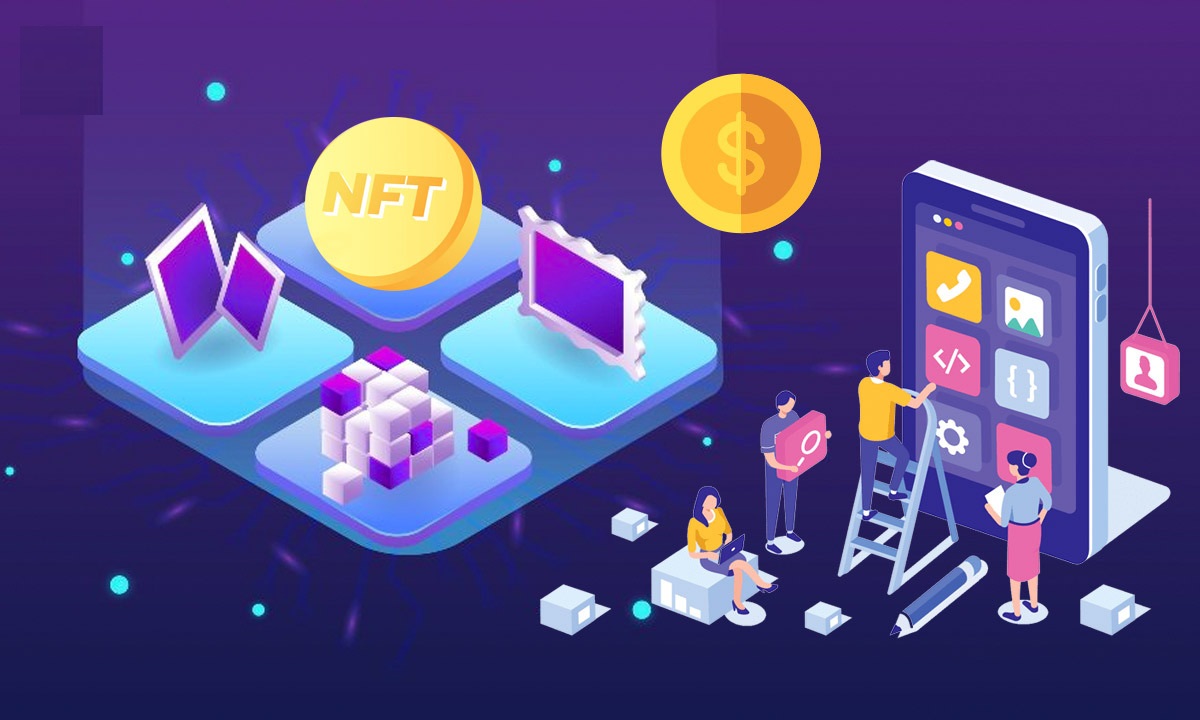
Well, there is no such fixed cost to develop an NFT marketplace as it keeps varying from one application to the other. For instance, the cost of Solana NFT marketplace differs from Cardano NFT marketplace development. Still, the clone script cost of the NFT marketplace will be around $5000 to $30000. So, to offer businesses with average NFT marketplace cost estimation, we have mentioned the estimated time along with the average cost in the tabular format.
| NFT Marketplace
App Features |
Average Development Time | Average Development Cost |
| UI/UX | 42 hours | $1800+ |
| Security & Authorization | 72 hours | $3200+ |
| User Profile | 42 hours | $1800+ |
| Homepage | 84 hours | $3700+ |
| Search & Filter | 96 hours | $4300+ |
| Product Page | 42 hours | $1800+ |
| Review & Rating | 48 hours | $2100+ |
| Shopping cart | 48 hours | $2100+ |
| Payment Gateway | 42 hours | $1800+ |
| Notification | 32 hours | $1400+ |
| Ethereum Integration | 96 hours | $4300+ |
| NFT Management | 96 hours | $4300+ |
| Inventory Management | 42 hours | $1800+ |
| Buyer’s Panel | 64 hours | $2800+ |
| Author Panel | 132 hours | $5900+ |
| Admin Panel | 85 hours | $3800+ |
| Total | 1063 hours | $47800+ |
Final Thoughts!
Now that you know everything about developing an NFT marketplace app, its features, cost, and more, it is time to begin the marketplace development process. You can also ha ire blockchain software developers like us. Dev Technosys, a leading player in blockchain, bitcoin, and NFT marketplace development, can help you with it. Drop your project requirements today and get an estimated cost to develop the NFT marketplace.
Frequently Asked Questions About NFT Marketplace App Development
1. What Are the Top NFT Platforms of 2024?
Today, there are myriad NFT marketplaces available in the market. But, if we talk about the top marketplaces, only a few platforms top the list. Here are some of the popular and leading NFT platforms for 2024 –
- Open sea
- Rarible
- SuperRare
- Foundation
2. Can I Create My Own NFT?
Yes, you can create your NFT by following this step-by-step process.
- Choose a suitable NFT form
- Set up your digital wallet
- Pick the right NFT marketplace
- Tokenize your art
- List on the marketplace
3. What Is the Cost of Develop An NFT Marketplace?
An average NFT marketplace app development cost would be around $10,000 – $20,000 and more, depending on the type of marketplace developed. So first, you will have to share your project requirements with the professionals. They will analyze your marketplace app requirements and share the exact cost of the NFT marketplace.
4. How to Develop An NFT Marketplace?
Developing a successful NFT marketplace isn’t everyone’s cup of tea, but if businesses follow the step-by-step development process, they can make it possible. Here is the process –
- Step 1 – Discovery Phase
- Step 2 – Designing Phase
- Step 3 – Development Phase
- Step 4 – Testing Phase
- Step 5 – Deployment & Support
5. What Is The Difference Between NFT, SFT, & DNFT?
NFTs are digital authenticity certificates linked to any digital piece of data, while SFTs combines the benefits of fungible and non-fungible tokens and strengthen their respective weak points. On the other hand, dynamic NFT or DNFT is defined by the newer ERC-1155 standard, which makes metadata alteration possible based on external conditions.

